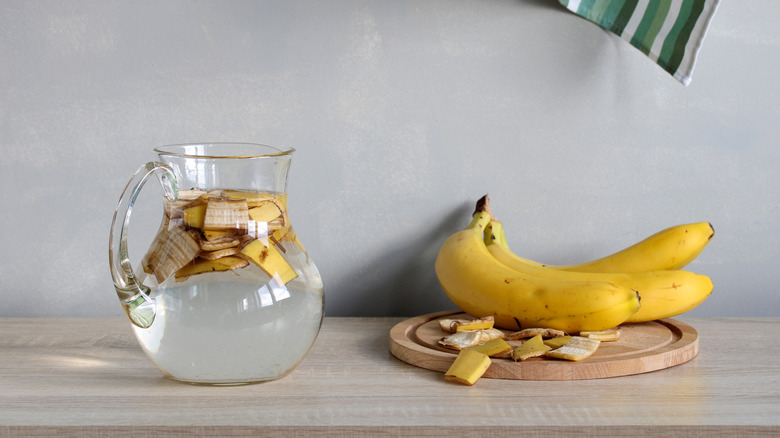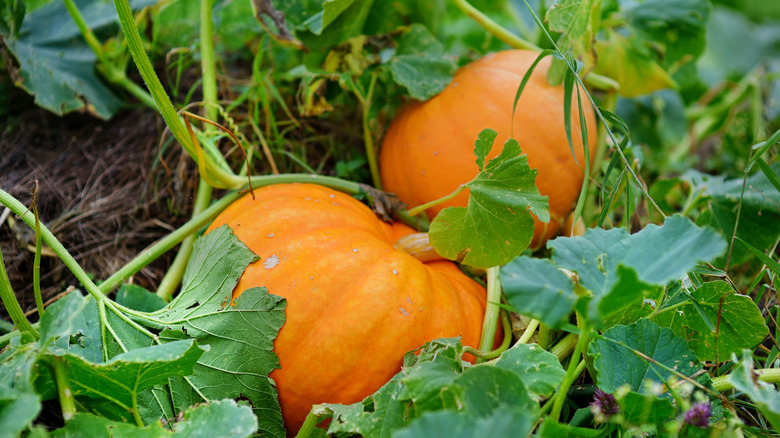What Happens To Pumpkin Plants When You Add Banana Peels
Growing your own pumpkins for spooky season is fun and all, but without proper fertilization, you won't have enough room to carve a silly — or scary — face into your homegrown orange squash. A key component of many fertilizers is potassium. Stunted growth is a telltale sign that your plants are desperate for potassium, so if your pumpkins are smaller than they are scary, you may be lacking the nutrient. If you're looking for a more natural way to feed your pumpkins, you might consider alternative options. Bananas are a great source of potassium for humans, so shouldn't they also give your pumpkin plants a little boost?
Studies have shown that bananas can indeed be successfully used to fertilize plants, but you can't just mix peels into your soil and call it a day. While they break down in your dirt, decomposing banana peels consume nitrogen, meaning that while you're trying to add potassium, you can actually be doing more harm than good by using up nitrogen that your pumpkins also need. Another issue is that fresh banana peels are mostly water, so the concentration of potassium and other nutrients is minimal. Not to mention, the process to break down peels is slow, which means the nutrient dispersal will also be slow. So what happens if you add banana peels around your pumpkin plants? Probably not much.
To properly use banana peels to supplement your pumpkin plants with potassium, you'll want to compost them with other organic materials, rather than simply adding them to your soil. Once you've fertilized with your banana-infused compost, you can expect your pumpkin plants to thrive — they could produce more pumpkins, grow faster, and be more resistant to pests. Check out Martha Stewart's expert advice for growing the perfect pumpkins for additional tips.
How to fertilize pumpkin plants with banana peels
Researchers have determined banana peels to be helpful in fertilizing plants, but for banana peels to fully contribute to the health and growth of your pumpkins, it will take a little work and patience. One recent study found that combining banana peels with other fruit peels, like orange peels, makes for a better fertilizer, which supports the idea that you should be composting your banana peels to get as much out of them as possible.
Making your own DIY compost with banana peels is easy. First, choose a spot for your compost pile in your yard or purchase a tabletop compost bin. Then, add a 50:50 combination of brown and green materials. Brown materials include tree branches, leaves, newspaper, coffee filters, and more; green materials include your banana peels, egg shells, apple cores, and other food waste. Here's more on how to make your own DIY compost.
To use compost for your pumpkin plants, simply mix some of your banana peel compost into the soil before you plant your seeds or pumpkin seedlings. The potassium from the compost will feed your pumpkin plants all season long. Keep in mind that pumpkin plants also need nitrogen and phosphorous to grow successfully, so using a water-soluble fertilizer may be a more effective option.

